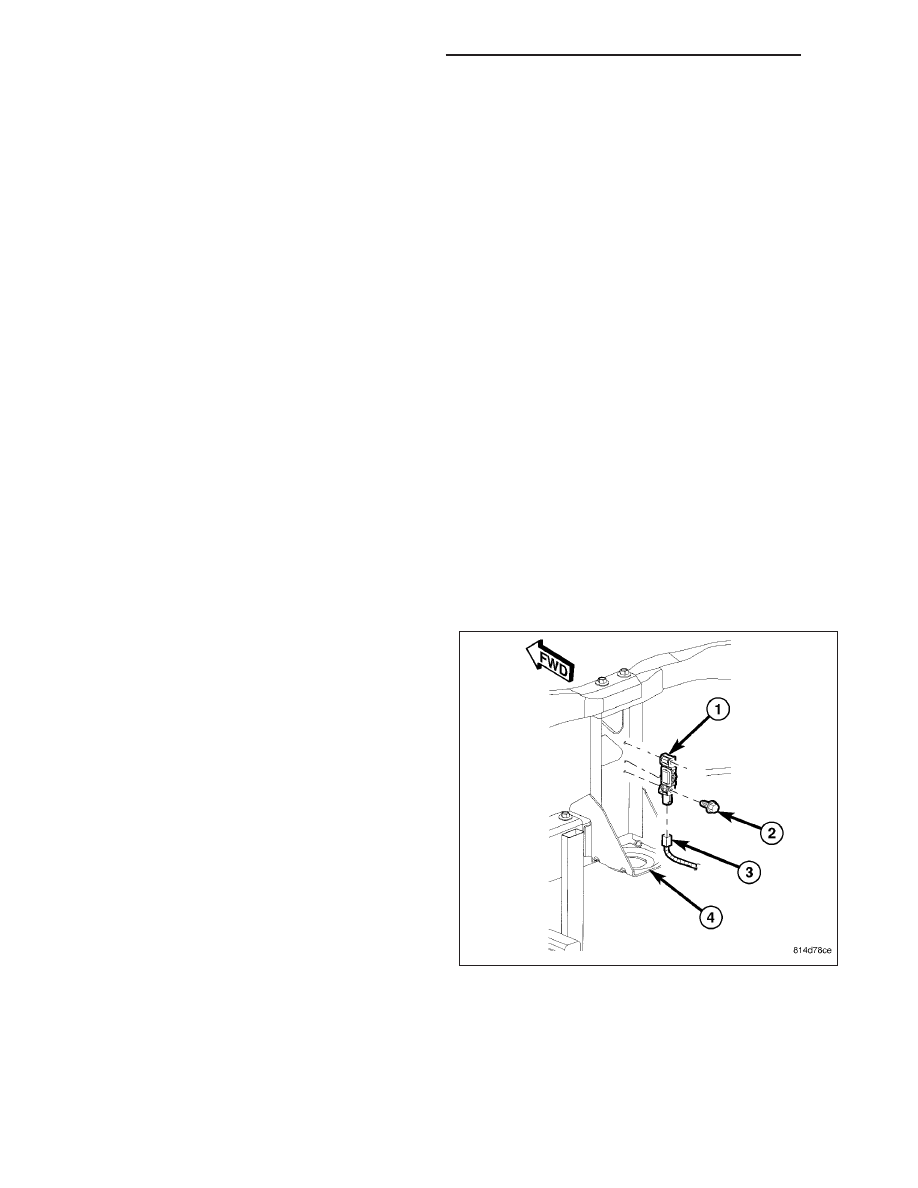Dodge Dakota (ND). Manual - part 461

The ORC microprocessor continuously monitors all of the side passive restraint system electrical circuits to deter-
mine the system readiness. If the ORC detects a monitored system fault, it sets a Diagnostic Trouble Code (DTC)
and controls the airbag indicator operation accordingly. The impact sensors each receive battery current and ground
through left or right sensor plus and minus circuits from the ORC. The impact sensors and the ORC communicate
by modulating the voltage in the sensor plus circuit.
The hard wired circuits between the side impact sensors and the ORC may be diagnosed and tested using con-
ventional diagnostic tools and procedures. However, conventional diagnostic methods will not prove conclusive in
the diagnosis of the ORC, the impact sensors, or the electronic message inputs to or outputs from the impact sen-
sors. The most reliable, efficient, and accurate means to diagnose the impact sensors, the ORC, and the electronic
message communication between the sensors and the ORC requires the use of a diagnostic scan tool. Refer to the
appropriate diagnostic information.
REMOVAL
FRONT
WARNING: To avoid personal injury or death, on vehicles equipped with airbags, disable the supplemental
restraint system before attempting any steering wheel, steering column, airbag, occupant classification sys-
tem, seat belt tensioner, impact sensor, or instrument panel component diagnosis or service. Disconnect
and isolate the battery negative (ground) cable, then wait two minutes for the system capacitor to discharge
before performing further diagnosis or service. This is the only sure way to disable the supplemental
restraint system. Failure to take the proper precautions could result in accidental airbag deployment.
WARNING: To avoid personal injury or death, never strike or drop the front impact sensor, as it can damage
the impact sensor or affect its calibration. The front impact sensor enables the system to deploy the front
supplemental restraints. If an impact sensor is accidentally dropped during service, the sensor must be
scrapped and replaced with a new unit. Failure to observe this warning could result in accidental, incom-
plete, or improper front supplemental restraint deployment.
1. Disconnect and isolate the battery negative cable.
Wait two minutes for the system capacitor to dis-
charge before further service.
2. Remove the two screws (2) that secure the right or
left front impact sensor (1) to the back of the right
or left radiator support vertical member (4).
3. Disconnect the headlamp and dash wire harness
connector (3) from the sensor connector recepta-
cle.
4. Remove the right or left front impact sensor from
the engine compartment.
8O - 440
RESTRAINTS - SERVICE INFORMATION
ND